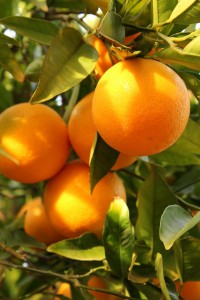After eating a delicious piece of fruit, have you ever planted the seed? Did the seed you planted make the same fruit? The answer to the second question is most likely, “No.” What probably happened to your seed is that it grew a tree that a) never made fruit or b) took over 10 years to bear fruit that was inedible. So, why did this happen?
The reason that seed did not reproduce itself is because it came from a cloned tree. It might surprise you to know that humans have cloned fruit trees for thousands of years! Cloning got started when someone discovered they could take the wood from a delicious fruit tree (the scion) and graft or bud it onto the wood of a mature tree (the rootstock).
Cloning
So why don’t most fruit tree seeds yield edible fruit? It has to do with genetics. Fruit is the result of sexual reproduction (with a little help from the bees). In sexual reproduction, the male and female genetic materials combine to make something new. In this way, each fruit is genetically diverse, just like you and I are different from our parents. Sexual reproduction is Mother Nature’s way of ensuring survival of a species-if all of us were exactly alike, one bad germ could come along and wipe us all out.
Part of our modern-day confusion regarding cloning and reproduction can be blamed on the story of Johnny Appleseed. As kids we read that this adventurous and kindly man shared his favorite apple seeds (which grew into trees with edible apples) with his new friends during his travels. In reality, Johnny’s apple seeds grew into trees with apples that were mostly inedible as fresh fruit, but absolutely fantastic for making hard apple cider! (You can read more about Johnny Appleseed in The Botany of Desire by Michael Pollan).
Eventually, cloning became part of a business for plant breeders, who crossed the genetic material of known varieties to create new ones. Then, once a new variety was made they budded or grafted it onto mature trees. This is how the honeycrisp™ apple was created in 1960 by the University of Minnesota’s apple breeding program. It wasn’t until 1991 that the first honeycrisp ™ apples made it into market, however.
So, what can be cloned? You can’t just graft or bud any old plants together. The plants need to be closely related. For example, apples and pears can be grafted onto each other, peaches and nectarines can be grafted together, and citrus trees of any type can be grafted or budded together (i.e. lemon, orange, grapefruit, lime, etc.). If you only have space in your yard for one tree, you can graft 20 different varieties of the same kind of fruit onto that same tree, and each fruit type will ripen according to its normal ripening time!
The one thing to remember about grafting and budding is that it takes time, practice and repetition to get it right. Don’t give up if it doesn’t work right away. A lot of the grafting done in fields for grapes and other trees is done by farm workers who are amazingly fast and adept at this process. If you know someone who does this, ask them to help you learn how to do it. You can also watch my Citrus Budding video to see how budding is done. This spring I hope to have another video about budding and possibly grafting.
Comments
comments
